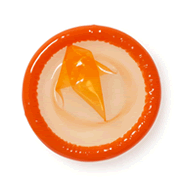Are guys big whiners or does hormonal birth control for men actually suck?
Another day, another male birth control method that won't make it to market. But let's not blame the dudes.

A new study about a male birth control shot was recently released, but it’s safe to say this method will not be marketed as the first new birth control for guys since the middle ages. Why not? A couple of reasons, but not the ones many of the headlines are emphasizing.
Yes, there were side effects
A lot of the coverage of this study has focused on the side effects the guys in the study reported, in some cases suggesting that the study failed because participants couldn’t handle the side effects. In fact, a panel of outside experts recommended ending the study early because they worried that the side effects were causing more harm than expected.
What were the harmful side effects the panel was worried about? Here are the most common ones that were probably or definitely related to the shots:
Acne. Almost half of the guys (46%) reported this side effect, but only 6% had moderate or severe acne. The rest said it was mild.
Increased libido. 38% of guys reported this, with 5% saying it was moderate or severe.
Pain where the shots were given. About a quarter of guys (23%) experienced this, but less than 2% said it was moderate or severe.
Mood changes. 17% said they had mood changes that the researchers called “emotional disorders,” with less than 1% having a moderate form. Fewer guys reported depression (3%), but most of these (2%) were moderate or severe.
Sounds familiar, right? Changes in skin, libido, and mood are well-known side effects of some birth control for women. But how does this compare to how often women using the shot have these types of side effects? In this case, it’s hard to compare apples to apples because the original studies on the shot started in the 1950s, when researchers were measuring things differently. That said, about 1% of women using the shot reported acne, 6% had a decreased libido, 2% had depression, and there was pain where the shots were given in “a few instances.”
The panel of experts who recommended stopping this study weren’t thinking about women’s experiences as a comparison. They were comparing these side effects to the side effects experienced by guys who use the same drugs for other reasons. For example, some men are prescribed the same type and dose of testosterone that was used in this study to treat low natural testosterone. Fewer than 1% of men using testosterone for this reason had mood and libido changes.
But, um, you don’t know if it’s working
A lot of the coverage about this shot says it was “96% effective” as birth control. But here’s the thing: It takes up to 5 months for this method to become effective. (Compare that to the vast majority of methods for women, which become effective immediately or within a week.) Even after 5 months, the researchers found that the method didn’t work for 3% of the guys—and another 11% stopped the study without learning whether it worked for them. For the guys who made it to the part of the study where researchers measured how well the shots worked as birth control, almost 8% had an increased sperm count or a partner with an accidental pregnancy.
Altogether, we know this method didn’t work for about one in ten of the guys in the study. That’s in the same ballpark of effectiveness as the pill, the patch, and the ring. But here’s the critical difference: guys using these shots showed up for their injections on time, every time (i.e. were “perfect” users), but the shots still weren’t all that effective. In contrast, the pill, patch, and ring are all 99% effective with perfect use (i.e. in a clinical trial) and less effective (91%) in real life.
Even worse, the guys in the study had no way of knowing whether their birth control was working without getting a sperm count. If you forget to take a pill or put your ring back in, at least you know and can make a decision about what to do next. One issue with this method was that users wouldn’t know if their method was failing them without doing ongoing sperm counts.
When is it okay to cut and run?
In a nutshell, we’re guessing the decision to end the study had more to do with how well this method worked overall than with whether the guys in the trial were being babies about side effects. The team working on this method concluded, “while this drug combination in the current dosage will not move forward as a contraceptive method, this clinical trial provides valuable information on its effectiveness, safety and acceptability. Research is expected to continue on the development of a male contraceptive, whether hormonal or non-hormonal.” Amen to more research—we’ll keep our fingers crossed for better methods for guys in the future. (But we won’t hold our breath.)
How do you feel about this article?

Heat up your weekends with our best sex tips and so much more.

